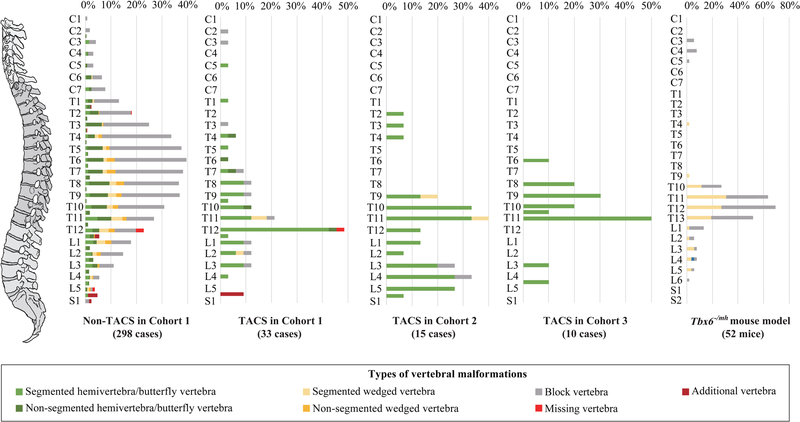Figure 2. Comparison of the Distribution Regarding Abnormal Vertebrae in Non-TACS and TACS Patients and in Tbx6−/mh Mouse Compound Inheritance and Gene Dosage Model.
The X-axis shows the frequency of each malformation in each vertebra and Y-axis shows the vertebral distribution in the spine. The vertebral malformations in the non-TACS group (N=298) were normally distributed. There were 58 TACS patients in total in three worldwide cohorts (Cohort 1 from PUMCH in China, N=33; Cohort 2 from the multiple centers in Japan, N=15; Cohort 3 from multiple centers in the USA, N=10). The Tbx6−/mh engineered mice [N=52] exhibited a distinct phenotype, namely, a defect of formation involving the lower part of the spine. In addition, malformations in the upper and middle thoracic spine were significantly less involved (P =7.3×10−5 and 3.0×10−6, respectively) in the TACS group than in the non-TACS group.
Abbreviation: CS, congenital scoliosis; TACS, TBX6-associated CS; Non-TACS, non-TBX6-associated CS; mh, mild-hypomorphic; C, cervical vertebra; T, thoracic vertebra; L, lumbar vertebra; S, sacral vertebra.

